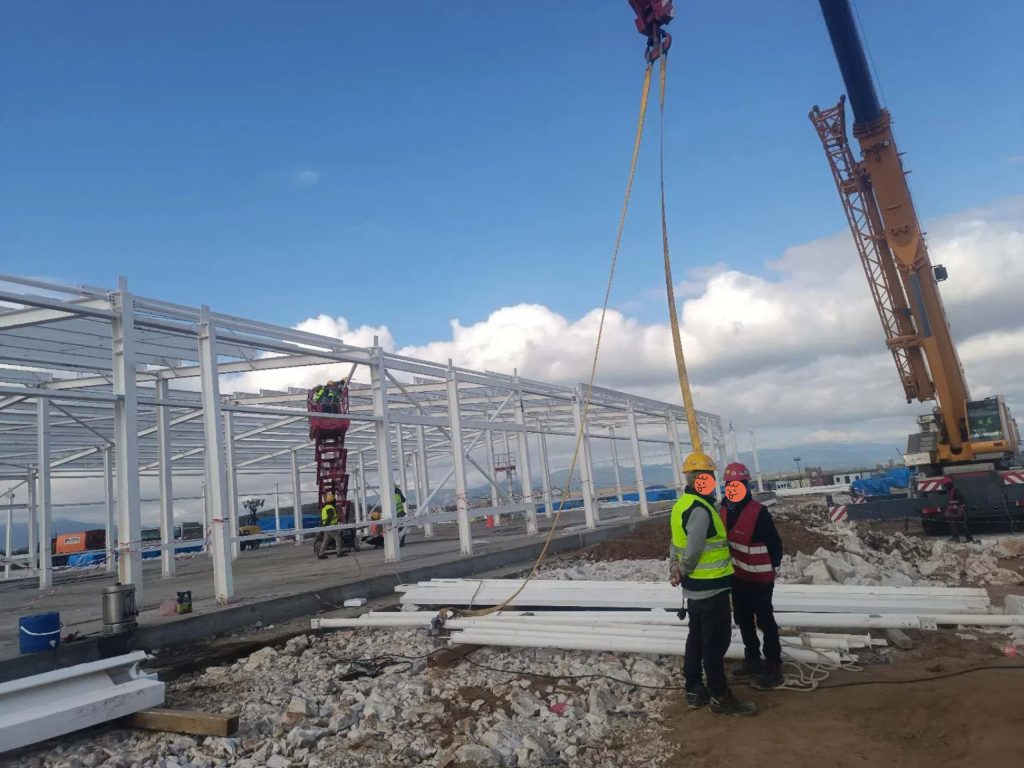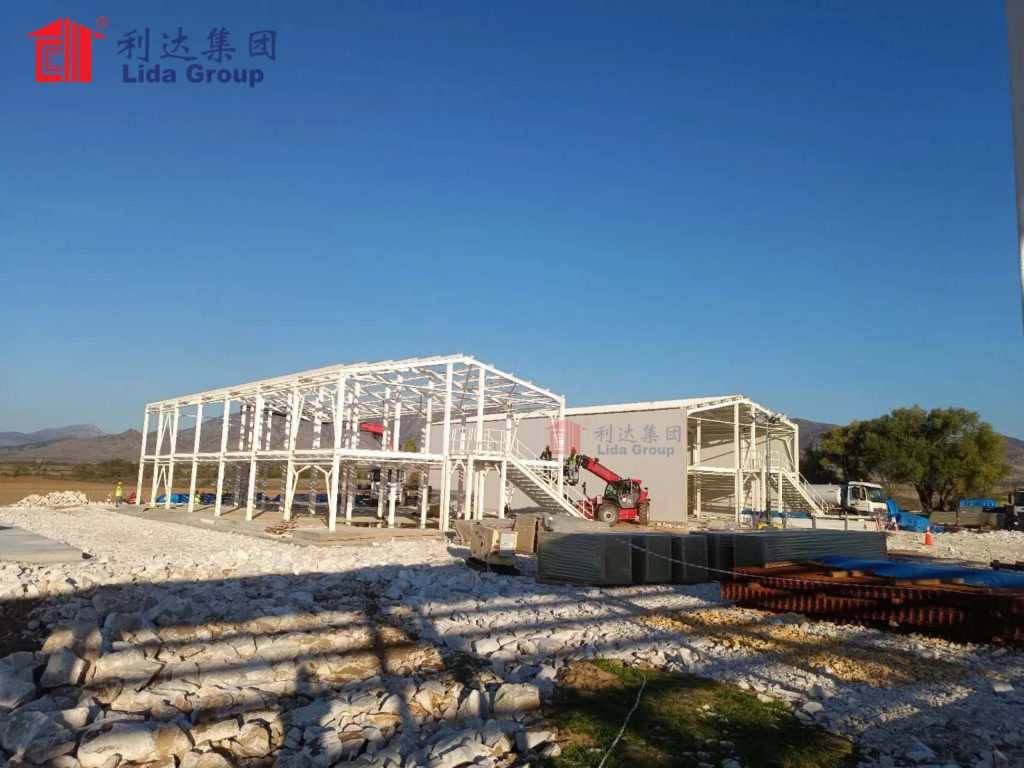The Challenges Facing Modern Agriculture
Modern agriculture faces a multitude of challenges that threaten its sustainability and efficiency. One of the most pressing issues is climate change, which has led to unpredictable weather patterns, extreme temperatures, and erratic rainfall. These conditions not only disrupt traditional farming practices but also necessitate more resilient infrastructure capable of withstanding harsh environmental conditions. Additionally, the global population continues to grow, placing increased demand on food production systems already strained by limited arable land and water resources.
In this context, farmers must adopt innovative solutions to maintain productivity while minimizing environmental impact. Traditional agricultural structures often fall short in providing the necessary protection and functionality required for modern farming operations. For instance, conventional barns and storage facilities may lack proper insulation, ventilation, or durability, leading to inefficiencies and higher operational costs. Moreover, these structures are frequently ill-equipped to integrate advanced technologies such as IoT devices, which can significantly enhance farm management through real-time monitoring and data-driven decision-making.
The need for high-quality steel farmhouses becomes evident when considering their potential to address these shortcomings. Steel buildings offer superior structural integrity, resistance to pests and weather, and longer lifespans compared to traditional materials like wood. Furthermore, they provide an ideal platform for incorporating IoT-ready designs, enabling seamless integration of smart sensors, automated systems, and other cutting-edge technologies. By leveraging these advancements, farmers can improve crop yields, optimize resource use, and ultimately contribute to more sustainable agricultural practices.
Lida Group’s Vision for Future-Proofing Agriculture
Lida Group, a pioneer in the field of agricultural infrastructure, envisions a future where farms are equipped with robust, technologically advanced structures designed to meet the demands of modern agriculture. Their mission is clear: to revolutionize the way we think about farm buildings by integrating state-of-the-art construction techniques with the latest technological innovations. This vision aligns perfectly with the evolving needs of today’s agricultural sector, where resilience, efficiency, and sustainability are paramount.
Central to Lida Group’s approach is their commitment to high-quality steel farmhouses that incorporate IoT-ready metal building designs. These structures are engineered to be durable and adaptable, ensuring they can withstand the rigors of changing climates and environmental pressures. By using high-quality steel, Lida Group ensures that their farmhouses possess exceptional strength, longevity, and resistance to natural elements, pests, and fire hazards. This material choice not only enhances the physical integrity of the buildings but also reduces maintenance requirements and extends their useful life.
Moreover, Lida Group places significant emphasis on designing structures that are fully compatible with IoT technology. The incorporation of IoT-ready features allows for seamless integration of smart sensors, automation systems, and data analytics tools. This enables farmers to monitor and manage various aspects of their operations in real time, from soil moisture levels and temperature control to livestock health and inventory management. By harnessing the power of data, farmers can make informed decisions that lead to optimized resource usage, improved crop yields, and enhanced overall productivity.
The strategic alignment of Lida Group’s offerings with the current and future needs of the agricultural sector underscores their dedication to supporting sustainable farming practices. Their innovative solutions are tailored to help farmers navigate the complexities of modern agriculture, ensuring they have the tools and infrastructure needed to thrive in an increasingly challenging environment. Through this forward-thinking approach, Lida Group aims to empower farmers worldwide to build resilient, efficient, and sustainable agricultural enterprises.
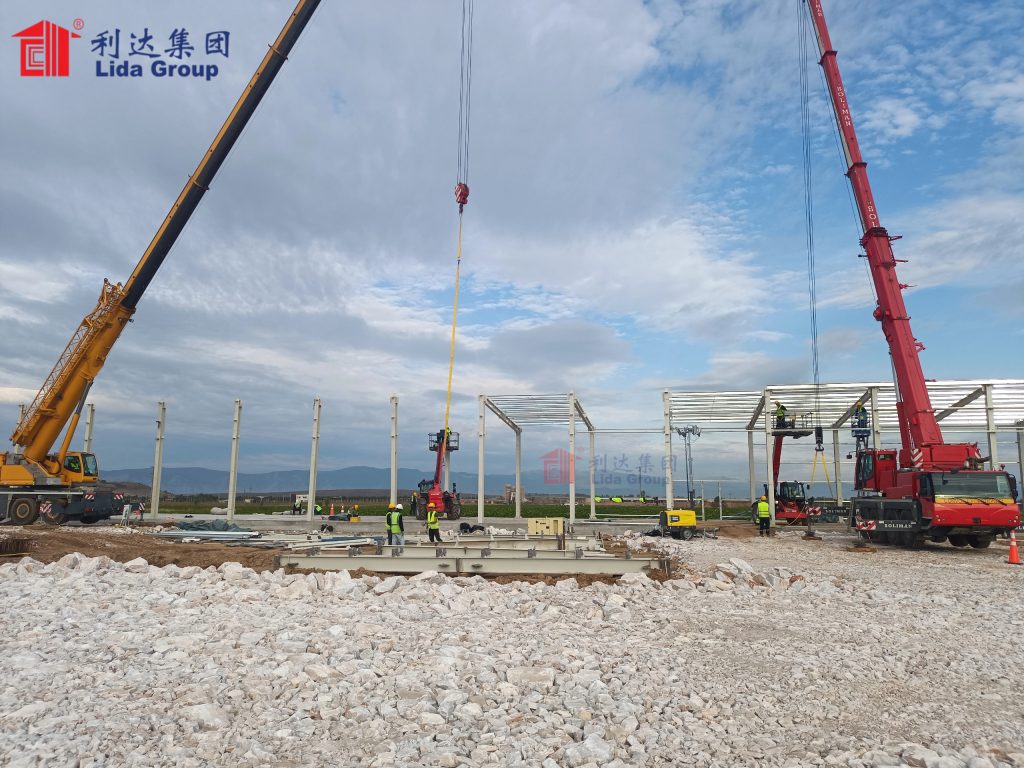
Key Features of High-Quality Steel Farm Houses
High-quality steel farmhouses, as developed by Lida Group, boast several key features that set them apart from traditional agricultural structures. Firstly, the primary advantage lies in their unparalleled durability and longevity. Constructed from high-grade steel, these buildings exhibit remarkable strength and resistance to environmental stressors such as heavy snow loads, strong winds, and seismic activities. This robustness translates into fewer repairs and lower maintenance costs over time, allowing farmers to focus more on their core activities rather than dealing with frequent upkeep issues.
Another critical feature is the superior insulation properties of steel farmhouses. Unlike conventional wooden structures, which may suffer from poor thermal performance, steel buildings can be designed with advanced insulation systems. This ensures optimal internal temperature regulation, which is essential for protecting crops, livestock, and stored goods from extreme weather conditions. Proper insulation also contributes to energy efficiency, reducing heating and cooling costs and promoting a more environmentally friendly operation.
Additionally, the flexibility and scalability of steel farmhouses cannot be overstated. These structures can be easily customized to fit specific needs and can be expanded or modified as business requirements evolve. Whether it’s adding extra storage space, creating new processing areas, or adjusting layouts to accommodate different types of machinery, steel buildings offer unparalleled adaptability. This flexibility is particularly valuable in the dynamic world of agriculture, where changes in market demands, regulatory requirements, and technological advancements necessitate quick adjustments.
Furthermore, steel farmhouses are inherently resistant to pests and diseases, eliminating the risks associated with infestations that can devastate crops and compromise animal health. The non-porous nature of steel makes it an inhospitable environment for pests, thereby reducing the need for chemical treatments and further contributing to sustainable farming practices. Combined with their fire-resistant properties, these buildings provide a safer and more secure environment for both agricultural operations and personnel.
Finally, the aesthetic appeal and architectural versatility of steel farmhouses should not be overlooked. With sleek lines, clean finishes, and the ability to incorporate large windows and skylights, these structures can enhance the visual appeal of any farmstead. They also blend seamlessly with existing buildings, making them a versatile addition to any property. Overall, the combination of durability, insulation, scalability, pest resistance, and aesthetic value makes high-quality steel farmhouses an indispensable asset for modern agriculture.

Integration of IoT Technology in Agricultural Buildings
The integration of Internet of Things (IoT) technology within agricultural buildings represents a transformative leap towards smarter, more efficient farming practices. At the heart of this innovation is the deployment of smart sensors, which serve as the eyes and ears of the digital ecosystem. These sensors are strategically placed throughout the farm to collect real-time data on various parameters such as soil moisture, temperature, humidity, and light intensity. By continuously monitoring these variables, farmers gain invaluable insights into the precise conditions affecting their crops and livestock, enabling them to make timely and accurate interventions.
One of the primary advantages of integrating IoT technology is the ability to automate routine tasks. Automated systems, powered by these sensor networks, can regulate irrigation schedules, adjust lighting conditions, and even manage feed distribution for livestock. For example, soil moisture sensors can trigger automatic watering systems when the ground reaches a certain dryness threshold, ensuring that plants receive just the right amount of water without waste. Similarly, temperature sensors in livestock housing can activate cooling or heating mechanisms to maintain optimal living conditions, enhancing animal welfare and productivity.
Data analytics plays a pivotal role in maximizing the benefits of IoT integration. Advanced algorithms process the vast amounts of data collected from these sensors, identifying trends and patterns that inform decision-making processes. Predictive analytics can forecast potential issues before they arise, such as disease outbreaks or equipment failures, allowing farmers to take preemptive action. This proactive approach minimizes downtime, reduces losses, and optimizes resource utilization across the farm.
Furthermore, remote monitoring capabilities enable farmers to oversee their operations from virtually anywhere. Through user-friendly dashboards accessible via smartphones or computers, farmers can track key metrics in real time and receive alerts for any anomalies. This level of connectivity ensures that even off-site managers can maintain full visibility and control over their agricultural enterprises, streamlining operations and improving responsiveness.
In summary, the integration of IoT technology within agricultural buildings provides a comprehensive solution that enhances efficiency, accuracy, and sustainability. By leveraging smart sensors, automated systems, and sophisticated data analytics, farmers can cultivate healthier crops, raise thriving livestock, and manage their resources more effectively. As the agricultural industry continues to embrace these technological advancements, the future of farming looks brighter and more productive than ever before.
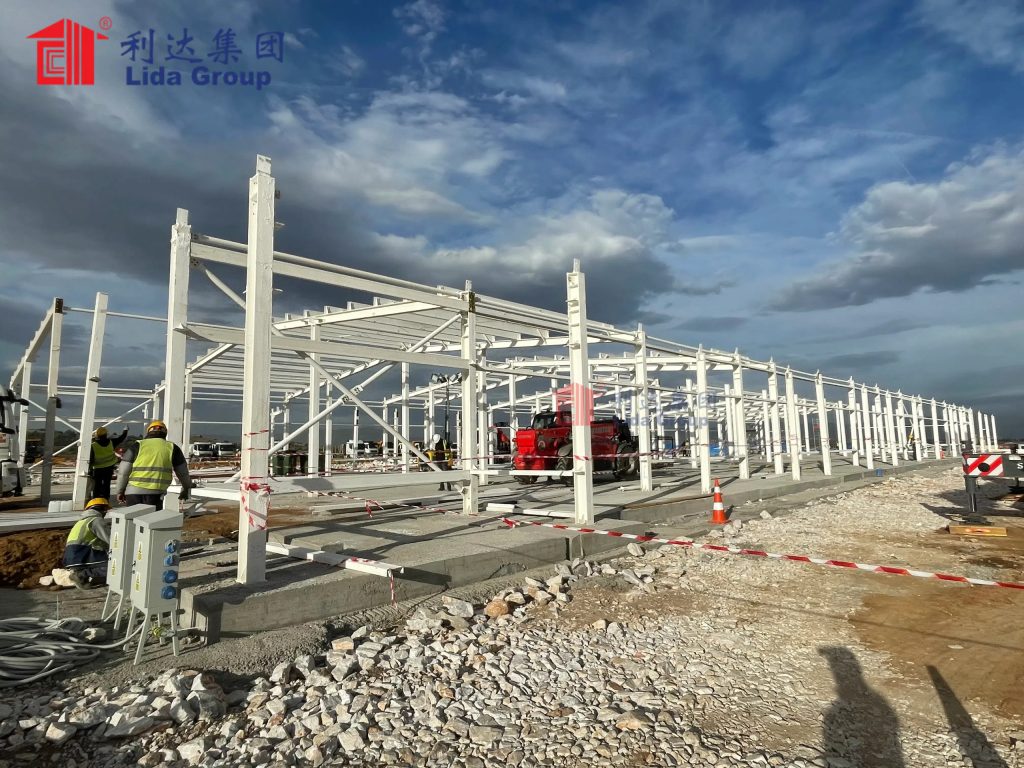
Case Studies: Successful Implementation of Lida Group’s Steel Farmhouses
To illustrate the tangible benefits and practical applications of Lida Group’s high-quality steel farmhouses, several case studies highlight successful implementations across diverse agricultural settings. In one notable example, a dairy farm located in a region prone to severe winters adopted Lida Group’s steel farmhouse design to house their cattle. The structure’s robust insulation system proved instrumental in maintaining optimal temperatures during freezing conditions, resulting in healthier cows and increased milk production. Additionally, the installation of IoT-enabled sensors allowed for continuous monitoring of indoor air quality and humidity levels, further enhancing the animals’ well-being and operational efficiency.
Another case study involved a vegetable grower who faced challenges with inconsistent crop yields due to fluctuating environmental conditions. By constructing a steel greenhouse with integrated IoT technology, the farmer was able to precisely control temperature, humidity, and lighting, creating an ideal growing environment. Smart sensors provided real-time data on soil moisture and nutrient levels, guiding irrigation and fertilization schedules. Consequently, the farmer experienced a significant increase in yield and quality of produce, along with reduced water and fertilizer usage, demonstrating the economic and environmental benefits of adopting advanced agricultural infrastructure.
A third scenario focused on a poultry farm that sought to upgrade its facilities to meet rising demand and stricter regulations. Implementing Lida Group’s scalable steel farmhouses enabled the farm to expand its operations efficiently. The modular design facilitated easy additions to the existing structure, accommodating growth without major disruptions. Integrated IoT systems monitored flock health, feeding patterns, and environmental factors, leading to better-managed operations and improved bird health. This resulted in higher productivity and compliance with regulatory standards, underscoring the versatility and adaptability of Lida Group’s solutions.
These case studies collectively demonstrate how Lida Group’s steel farmhouses, coupled with IoT technology, deliver substantial improvements in efficiency, productivity, and sustainability. From dairy farms to vegetable growers and poultry farms, these success stories showcase the broad applicability and effectiveness of modern agricultural infrastructure in addressing contemporary farming challenges.
### Economic Benefits and Cost Efficiency
Investing in high-quality steel farmhouses offers numerous economic benefits and cost efficiencies that can significantly enhance the profitability of agricultural operations. Firstly, the initial investment in steel buildings is often offset by their long-term durability and low maintenance requirements. Unlike traditional wooden structures, which require frequent repairs and replacements, steel farmhouses are built to last, reducing ongoing maintenance expenses. This longevity translates into substantial savings over the lifespan of the building, allowing farmers to allocate resources more effectively towards other critical areas of their operations.
Operational efficiency is another key area where steel farmhouses excel. The integration of IoT technology enables farmers to optimize resource usage, whether it involves water, electricity, or feed. For instance, automated irrigation systems based on real-time soil moisture data ensure that crops receive just the right amount of water, avoiding wastage and promoting healthy growth. Similarly, smart lighting and heating systems minimize energy consumption by adjusting according to actual needs, leading to lower utility bills. These efficiencies contribute directly to cost savings and improved financial performance.
Moreover, the scalability and flexibility of steel farmhouses facilitate easier adaptation to changing market conditions and expansion plans. Farmers can expand their operations incrementally without the need for extensive renovations or complete rebuilds, preserving capital and ensuring continuity. This modular approach allows for rapid adjustments to accommodate new products, services, or technologies, thereby enhancing competitiveness and market responsiveness.
Financially, the return on investment (ROI) from adopting steel farmhouses can be impressive. The combination of reduced maintenance costs, increased operational efficiency, and enhanced productivity results in a quicker payback period and higher net profits. Additionally, the improved quality and consistency of outputs—be it crops, livestock, or dairy products—can command premium prices in the market, further boosting revenue streams.
In conclusion, the economic benefits and cost efficiencies associated with high-quality steel farmhouses are compelling. By investing in durable, IoT-integrated structures, farmers can achieve significant savings, improve operational efficiency, and realize greater financial returns, positioning themselves for long-term success in an increasingly competitive agricultural landscape.
Environmental Sustainability and Social Responsibility
High-quality steel farmhouses play a crucial role in advancing environmental sustainability and social responsibility within the agricultural sector. One of the primary ways these structures contribute to sustainability is through their inherent energy efficiency. Steel buildings are designed with advanced insulation systems that minimize heat loss in winter and keep interiors cool in summer, reducing the need for artificial heating and cooling. This not only lowers energy consumption but also decreases greenhouse gas emissions, aligning with global efforts to combat climate change.
Water conservation is another significant benefit of using steel farmhouses. Integrated IoT technology enables precise irrigation scheduling based on real-time soil moisture data, preventing overwatering and ensuring optimal water use. This precision helps conserve precious water resources, especially in regions facing water scarcity. Moreover, the durability and longevity of steel structures reduce the frequency of replacement and repairs, thus minimizing the environmental footprint associated with construction materials and waste.
From a social responsibility perspective, these farmhouses promote worker safety and comfort. The robust construction of steel buildings provides a secure working environment, protecting employees from harsh weather conditions and structural failures. Enhanced ventilation systems ensure good indoor air quality, contributing to better health outcomes for workers. Additionally, the integration of IoT technology supports fair labor practices by optimizing workloads and reducing the physical strain on farmhands through automation and smart monitoring systems.
Sustainability certifications, such as LEED (Leadership in Energy and Environmental Design), recognize the eco-friendly attributes of steel farmhouses. Achieving these certifications can enhance a farm’s reputation and open doors to incentives and grants aimed at promoting sustainable practices. By adopting these structures, farmers demonstrate their commitment to responsible stewardship of natural resources and community well-being, fostering a positive image and trust among consumers and stakeholders.
In essence, high-quality steel farmhouses not only bolster agricultural productivity but also drive environmental sustainability and uphold social responsibility. Their contributions to energy efficiency, water conservation, worker welfare, and certification compliance underscore their pivotal role in shaping a more sustainable and equitable future for agriculture.
Summary and Future Outlook
In summary, the integration of high-quality steel farmhouses and IoT technology presents a transformative approach to modernizing agriculture. These structures offer unparalleled durability, energy efficiency, and adaptability, enabling farmers to tackle the myriad challenges posed by climate change, resource constraints, and market dynamics. By leveraging smart sensors and automated systems, farmers can optimize resource use, improve operational efficiency, and enhance the overall productivity of their farms. The economic benefits, including reduced maintenance costs and increased yields, combined with environmental sustainability through energy and water conservation, make these advancements highly advantageous. Looking ahead, the continued evolution of IoT technology promises even more sophisticated applications, potentially revolutionizing how we approach agriculture. As these innovations become more widespread, they will undoubtedly play a pivotal role in ensuring the future resilience and prosperity of the agricultural sector.
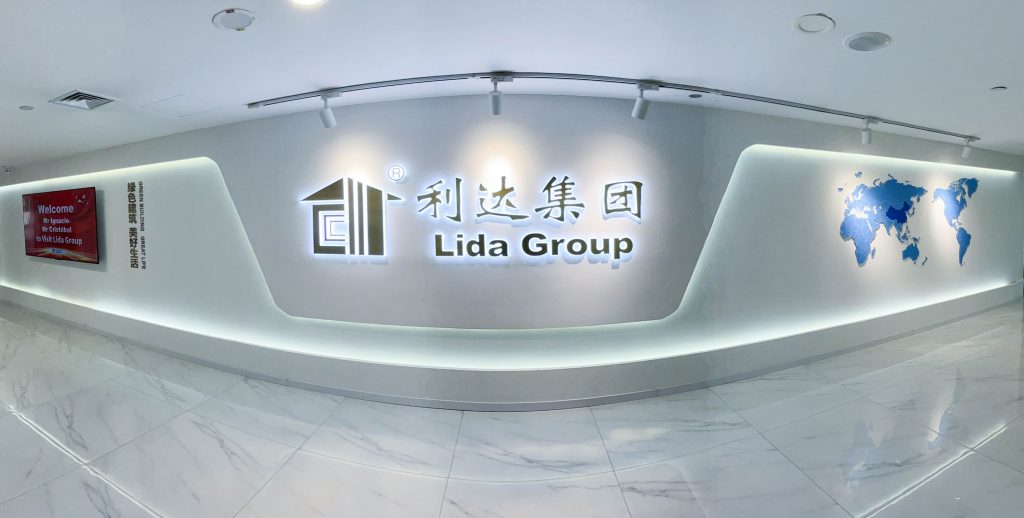
Related news
-
Cost Efficiency Redefined: Lida Group's High-Quality Steel Warehouses Reduce Lifetime Expenses Through Smart Metal Building
2025-07-07 15:24:14
-
Innovating Cold Chain Logistics: Lida Group Develops Temperature-Controlled Steel Warehouses with Advanced Metal Building Systems
2025-07-07 15:42:56
-
Disaster-Resistant Infrastructure: Lida Group's Steel Structure Construction Ensures Uncompromised Safety for Critical Warehouses.
2025-07-07 14:48:55
contact us
- Tel: +86-532-88966982
- Whatsapp: +86-13793209022
- E-mail: sales@lidajituan.com


